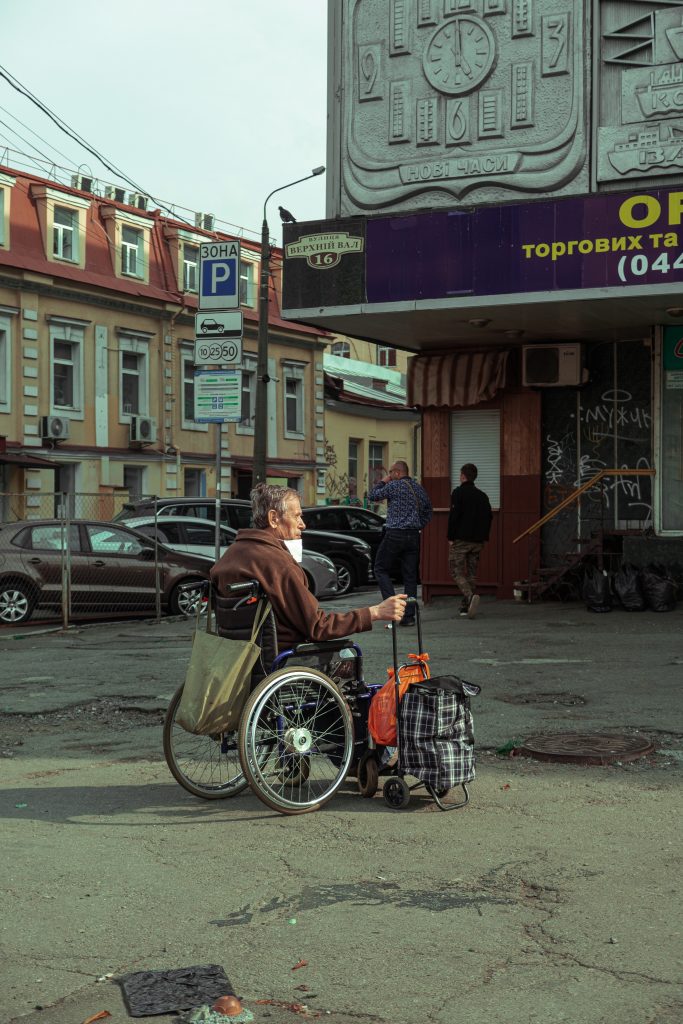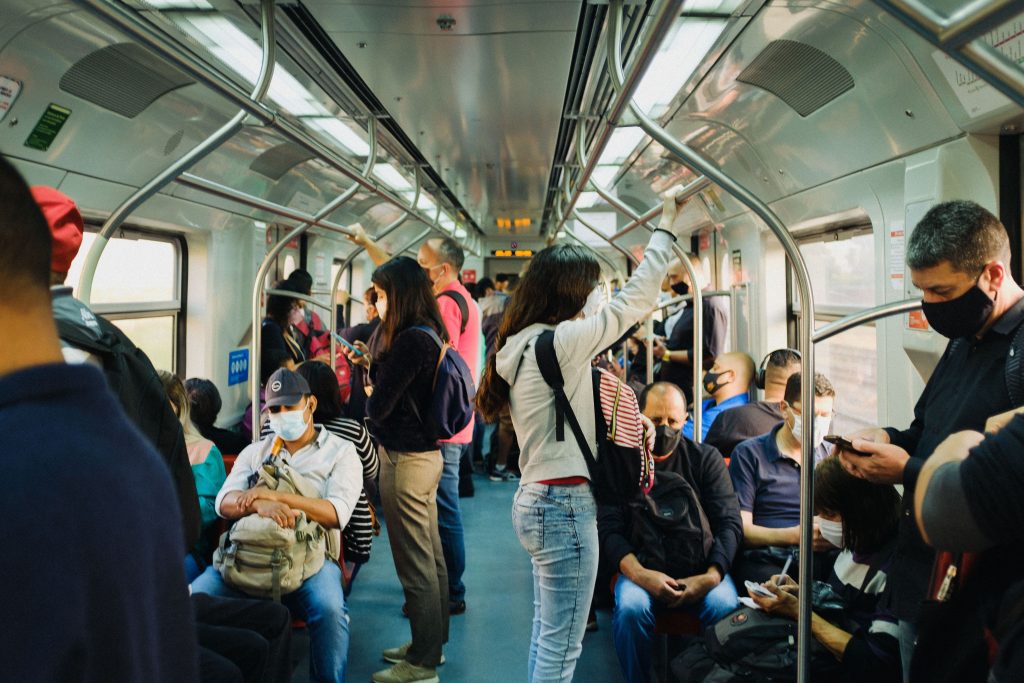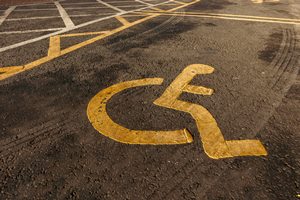The pandemic has accelerated immeasurable changes using technology such that we’d never dream of going back to the way we lived before. As citizens, we’re taking advantage of the impact of digitalisation in so many industries, for instance online university courses, online passport applications and digital vaccine passports. In the travel sector, we’ve experienced the boom of online journey planning and online ticketing which promotes better travel experiences. But despite these changes, many transport-related organisations are oblivious to the growing impact of the ‘transport accessibility gap’, says Krishna Desai, senior marketing manager at Cubic Transportation Systems.
Since many transport systems have not been created with disabled users in mind, people with disabilities in the UK take 38% fewer trips on public transport than those without. Many citizens are being failed by inappropriate and inaccessible transport provision across rail, road, air, bus and underground. The accessibility gap means a staggering 1 in 5 disabled people being unable to travel due to a lack of appropriate transport options. To enable change and close this gap, designers and developers of travel solutions must fully understand the needs of the users of their services at the point of designing them.
Current transport problems facing disabled travellers
When transport planners and operators design accessible solutions, there’s a tendency to think ‘wheelchair users’, when in fact there’s a much broader spectrum of impairments for instance visually impaired, people on crutches, neurodiverse individuals and the elderly.

Challenges related to the inaccessibility of transport impact a large proportion of the UK population disabled people make up 21% of the UK population, equating to 14 million people. The potential knock-on socio-economic disadvantages of this are that disabled people are almost twice as likely to be unemployed and nearly half of everyone in poverty in the UK either being disabled or living with a disabled person.
Improving disabled people’s access to transport widens access to healthcare, employment, education, and social activities. It’s estimated that an additional annual economic benefit of £72.4bn (Office for Budget Responsibility (OBR), 2021-22 forecast) could be generated if the entire transport accessibility gap were closed for disabled people in the UK.
There is also a very real risk of rapid change occurring without consideration for the needs of disabled people, such as the transition to net zero. Considering the accessibility of electric vehicles and charge-points for disabled people is vital to ensure that disabled people benefit from the shift to greener modes of transport.
Inclusive public transport starts with planning
The power lies with technology to create impactful and lasting change in the transport industry. According to Transport for London, 40% of disabled Londoners felt they would use public transport more often if it were easier to obtain travel information. Creating a more connected world requires embedding the right technology to help transportation agencies and municipal partners deliver seamless, integrated, and efficient mobility solutions that simplify daily commutes, reduce traveller frustration, and make journeys safer and more comfortable.
It’s vital that transportation authorities and transit agencies partner with the right tech partners to design, integrate, deploy, and manage mobility systems which are relevant to today’s lifestyles and challenges, as well as being future-proof. The right partner will consider users’ needs, as well as the organisation’s aims, which might be building modern mobility systems to manage demand and congestion, make journeys safer, and empower travellers to make informed and preferred travel choices.
Why the right apps and information systems matter

It’s impossible for disabled people to travel unless they are empowered with the right information to make decisions on how and when they need to go. Having access to the right data and functionality in apps and information systems is critical to facilitate this decision-making and provide real-time updates.
It’s important for travel operators to realise that urban revenue management solutions can help modernise their fare collection systems. This includes software and hardware that enables customers a convenient and efficient way to pay for all modes of travel, according to user preferences via mobile payments, contactless, or account-based ticketing, with inbuilt fare capping, so everyone always gets the best price for their trip. Furthermore, not everyone has access to a smartphone or contactless payment device so the ability to pay with closed-loop smart card systems which can be topped up at home, at retail outlets or at ticket machines, is important for ensuring accessibility.
To ensure ease of travel, real-time information which alerts disabled travellers of things like a broken lift or blocked exit can be deployed. Visual maps of stations may also help those who have a mental disability who can get overwhelmed navigating through stations as this offers them the opportunity to learn online first.
How Mobility as a Service (MaaS) systems can boost inclusive travel
Mobility as a Service (MaaS) is an innovative technology which promotes smooth end-to-end transit for disabled travellers. With MaaS, a travel provider can integrate into a single platform all modes of transport, both private and public, which are available in a city, offering the user the possibility of planning, reserving, and paying for their transportation inside the same application.
It can be applied to various transport use cases, for instance a small-scale cloud-based, real-time passenger information system, a regional congestion management platform, or a complex traffic management system for urban networks. Some of the benefits include user-based preferences, efficient payment with ticketless travel, and more sustainable travel. It’s a new concept of urban mobility which is the future of mobility and transportation in cities.
The platform approach / Software-as-a-Service model enables everyone from the smallest bus operator to the largest regional transport authority to deliver a reliable transit experience for their communities. Together, they deliver an integrated customer experience and integrated operations and analytics, empowering travellers to make smart, informed decisions based on facts.
The future of innovative transport solutions
Innovation in accessible design is inspired by modern transport solutions which have successfully been built with inclusivity in mind, such as the Elizabeth Line. This 72-mile fully digitalised railway line is set to transform travel within London and create social, environmental and economic opportunities that will last generations. This will increase connectivity for millions of people and enable an inclusive society through increased access to jobs and education.
With 41 step-free, fully accessible stations, the Line was designed to improve accessibility for those with limited mobility, giving routes into central London for those with disabilities, enabling better access to employment, housing, education and leisure facilities. According to the UK Government, by 2040 nearly one in seven people in the UK is projected to be aged over 75, therefore the need for accessible stations is only going to grow.
A team effort to design accessibility-first transport systems
Despite extensive ongoing work across public, private and third sector organisations which aims to improve the accessibility of transport for disabled people, a significant transport accessibility gap remains, thus highlighting the need for new dialogue, approaches, and solutions which deliver tangible change.

The entire industry travel providers and technology specialists must collaborate to improve the transportation network which will enhance travel and city living for all. For example, Cubic Transportation Systems’ long term programme with McMaster University is developing the building blocks to design the future of inclusive mobility through innovation and technology collaboration between government, academia, and the public and private sectors.
The good news? The transport industry is travelling in the right direction. Embracing accessibility and building it into travel solutions and adapting existing ones will see the accessibility gap in transport shrink, reduce everyday barriers to access travel for the disabled, optimise infrastructure and promote a better transport experience for all.
The author is Krishna Desai, senior marketing manager at Cubic Transportation Systems
Comment on this article below or via Twitter: @IoTNow_OR @jcIoTnow










